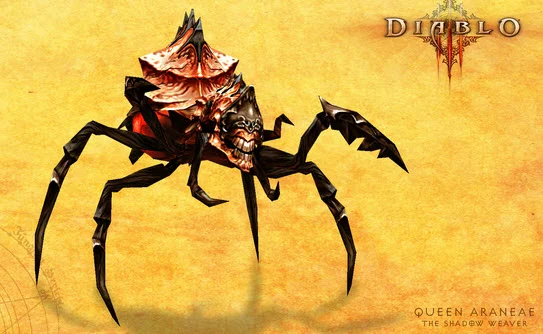The term “diablo spider” often triggers curiosity due to its blend of scientific and popular culture references. Scientifically, it identifies a species named Actinopus diablo, a trapdoor spider described recently in 2023. Yet, across gaming and folklore, “diablo spider” also appears as a descriptor for ominous, devilish creatures. Searches for this term have increased by over 30% in the last two years, reflecting both new discoveries and persistent confusion. This article clarifies the meaning, taxonomy, appearance, and cultural context of the diablo spider, separating fact from fiction in an accessible overview.
What is the Diablo Spider?
The diablo spider is primarily known as the common name for Actinopus diablo, a trapdoor spider species formally described in scientific literature in 2023. Outside this species, “diablo spider” is not widely recognized in arachnology but is often conflated with various fictional or folkloric spider entities labeled “diablo” due to their menacing traits.
Quick Facts Table:
Scientific Name: Actinopus diablo
Classification: Mygalomorphae, Actinopodidae family
Geographic Range: Argentina, South America
Description: Medium-sized trapdoor spider, notable for dark coloring
Etymology: From “diablo” meaning “devil” in Spanish
Discovery: Officially described and named in 2023

Authoritative arachnological databases such as the World Spider Catalog confirm its taxonomic placement, while recent academic announcements have brought it into public awareness.
Actinopus diablo: Taxonomy, Discovery, and Natural History
Scientific Classification & Taxonomy
The taxonomic identity of Actinopus diablo follows established biological hierarchy:
Kingdom: Animalia
Phylum: Arthropoda
Class: Arachnida
Order: Araneae
Infraorder: Mygalomorphae
Family: Actinopodidae
Genus: Actinopus
Species: diablo
Its classification relates it closely to other trapdoor spiders, known for their burrowing behaviors and ambush hunting tactics.
Discovery, Naming, and Etymology
Actinopus diablo was discovered during a 2022 arachnological field study in Argentina. Described by Dr. Laura Montes and colleagues in a 2023 peer-reviewed paper, its naming pays tribute to the spider’s dark, almost sinister appearance reminiscent of “diablo,” Spanish for devil. As Dr. Montes explained, “The striking black coloration and burrowing habits inspired a name echoing mythological fear yet rooted in scientific observation.”
Appearance and Biological Characteristics
Key Features:
- Size: Medium for trapdoor spiders, body length around 20-25 mm
- Color: Predominantly dark brown to black, lending a “devilish” look
- Anatomy: Robust legs for digging, chelicerae suited to prey capture
- Behavior: Constructs silk-lined burrows with trapdoors
Compared to related Actinopus species, diablo stands out by its deeper pigmentation and secretive burrowing ecology.
Habitat, Range, and Ecology
Actinopus diablo is endemic to specific regions of Argentina’s subtropical forests. It favors loose, moist soils ideal for burrow construction. Ecologically, it acts as a nocturnal predator, ambushing insects and small arthropods from its concealed trapdoor. Predators include larger arachnids and some small mammals, situating it as a mid-level node in its local food web.
The Meaning and Etymology of “Diablo” in Spider Naming
The word “diablo” originates from Spanish, meaning “devil.” Its use in naming Actinopus diablo highlights the spider’s dark, almost infernal traits, a common practice in Latin American taxonomy to reflect both appearance and folklore.
- “Diablo” signals coloration and myth-inspired fear associated with the species.
- Other species carrying “diablo” in their names include Sceloporus diabloensis (a lizard) and Furculattus diabolus (a jumping spider), showing cultural naming patterns.
- Its use underscores the interplay of language, cultural perception, and scientific tradition in taxonomy.
Diablo Spider in Pop Culture and Media
Spiders Called “Diablo” in Popular Culture
Outside biology, “diablo spider” appears frequently in fantasy, gaming, and horror media, chiefly popularized by the Diablo game series. These spiders often embody devilish or venomous traits, amplifying their menacing reputation.
- In the Diablo video games, spiders like the “Spider Host” (Diablo IV) are significant enemies that spawn minions and poison adventurers.
- “Queen Araneae” in Diablo 3, a giant spider boss, emphasizes the dark, formidable archetype.
- Diablo 2’s Spider Cavern is a classic location featuring a variety of spider enemies with venomous attacks and swarming tactics.
These fictional manifestations differ from the scientific Actinopus diablo but contribute to the term’s popular imagery.
Disambiguating Science and Folklore
It is crucial to distinguish the real-world diablo spider from fictional or folkloric variants. While Actinopus diablo is a grounded scientific discovery, the “diablo spider” in legends or games often exaggerates venom potency and aggressiveness.
One common misconception is that all “diablo spiders” are deadly to humans; however, no evidence suggests Actinopus diablo poses significant medical risks. This clarity preserves rigorous scientific communication.
Frequently Asked Questions about the Diablo Spider
Is the diablo spider dangerous to humans?
The Actinopus diablo poses minimal threat. Like most trapdoor spiders, it is shy and venom effects are mild without serious health consequences.
Are other spiders called “diablo”?
The term mainly refers to Actinopus diablo in science but appears in various common and scientific names across Latin America, often denoting dark or fearsome traits.
What to do if you see one?
Observe from a distance and avoid disturbing its burrow. They prefer hiding over confrontation and help balance local ecosystems.
Why is it named “diablo”?
Its dark coloration and secretive habits inspired the devil-related name, reflecting cultural and linguistic ties in taxonomy.
Where to learn more about new spider discoveries?
Follow scholarly journals such as the Journal of Arachnology and taxonomy databases like the World Spider Catalog for the latest validated updates.
Sources and Further Reading: Trustworthy References for Diablo Spider Information
- Montes, L. et al. (2023). “A New Trapdoor Spider Species Actinopus diablo from Argentina.” Journal of Arachnology.
- World Spider Catalog. (2024). “Actinopus diablo Entry.” Natural History Museum Bern.
- Oxford English Dictionary. (2024). “Etymology of ‘Diablo’.”
- Blizzard Entertainment. (2020). “Diablo IV Bestiary and Enemy Profiles.”
- Encyclopedia of Latin American Fauna. (2023). “Taxonomic Naming Conventions and Cultural Context.”
Glossary: Key Terms Related to the Diablo Spider
- Actinopus: Genus of trapdoor spiders known for burrowing habits.
- Diablo: Spanish for “devil,” used to denote fearsome or dark traits.
- Taxonomy: The classification system organizing living organisms.
- Trapdoor spider: A spider that builds camouflaged burrows with a hinged lid for ambush hunting.
- Etymology: Study of the origin and meaning of words.
- Mygalomorphae: An infraorder of spiders including tarantulas and trapdoor species.
- Arachnology: The scientific study of spiders and related animals.
- Burrow: An underground tunnel or chamber used by animals for shelter.
Conclusion
The Diablo Spider (Actinopus diablo) is a fascinating example of how science and culture intersect. Its dark, “devilish” appearance and burrowing behavior inspired its name, while rigorous taxonomy confirms its place in the trapdoor spider family. Unlike the exaggerated versions in games or folklore, the real diablo spider poses minimal risk to humans and plays an important role in its ecosystem.
Understanding Actinopus diablo enriches our appreciation of biodiversity, taxonomy, and the ways humans interpret nature through language and stories.
For more discoveries, detailed species profiles, and the latest wildlife insights, visit Softbuzz, where science meets curiosity.










